Comments on bird food habits during and after the recent storm
511 views
Skip to first unread message
DAVID A LEATHERMAN
Sep 11, 2020, 1:07:29 PM9/11/20
to Colorado Birds
This whole year, and especially the last week, has been surreal. In regards to the latter, high temps over 100 degrees, incredible smoke and ash in the air from the Cameron Peak Fire (and others), then an early heavy, wet snow. My first thought is how does
an outdoor plant survive in Colorado? Followed by, how do animals that depend on plants survive? Followed by how do our birds that depend on animals that depend on plants survive, particularly when the above set of events happens during the stressful, energy-depleting
exercise called "migration"?
I have been out a lot of late, including three trips to Crow Valley, one to Eaton Cemetery, several to Grandview Cemetery and nearby City Park in Fort Collins and once to the Wyoming Hereford Ranch. The following observations regarding birds and their feeding
are mostly from these trips.
I have heard the word "carnage" used and other words that imply this storm took a heavy toll on the birds. I saw several incidences of birds obviously in stress and doing things to cope they normally wouldn't do in the absence of the snow and cold, but I personally
didn't see high mortality. That said, in Fort Collins and surrounding area we didn't get the snow accumulations some other areas got, and I am not saying the reports of birds getting hit by cars because of being weak and having to hunt the bare ground afforded
by roads are in error.
What I have seen are lots of birds on the ground. I think this represents two things: 1), they were tired and wet and unable to fly very well, and 2), much of the food available to them had been washed from plants to the lower parts of plants or onto
the ground.
Feathers are the best insulation material we know, EXCEPT when wet. Faced with both wet and cold, a bird is in trouble. On Tuesday I was trying to bird Grandview and the major chore was avoiding slush balls falling from the elms and spruce overtopping all
the roads. Things went OK except for one that crashed down the back of my neck (think college football coach after a major victory getting the surprise Gatorade bath). What would a direct hit by one of those do to a bird? Mother Nature was playing "Battleship"
with all of us, and for pretty much two days was given an unlimited number of chances to guess coordinates. Some of us sunk, but in most cases I suspect just took a hit and limped to port.
Like most stores in the early days of the COVID-19 shutdown, certain shelves in outdoor food stores available to birds got depleted by the storm. Flying insects were erased from the air, mostly knocked to the ground. Like birds, they mostly survived but were
either too cold or wet to fly. At Crow Valley on the 8th I came across a catbird under a juniper eating the huge dewinged body of a common green darner dragonfly. We typically see darners coursing back and forth over water or open terrestrial ground. The
rest of the time they go up under the branches of trees and roost like bats (see below). I would guess the catbird got in under the juniper to hide from the elements and found a major morsel sharing its shelter - maybe a life-saver, but at a minimum a win-win.

A major food at Crow Valley and many urban areas of late is the elm leaf beetle (Xanthogaleruca luteola), both the yellow adults and grungy larvae which skeletonize the leaves to rusty brown. Inspection of several low branches revealed this
insect might have been an exception to my theory about insects getting knocked lower in, and even out of, trees. Somehow the larvae were still present. Maybe their "trick" was their evolved mode of feeding on the
underside of leaves. Winged adults were present in good numbers. Maybe they got knocked to the ground and by the time of my inspection had flown back up into the trees. At any rate, Townsend's Warblers, Yellow Warblers, Wilson's Warblers, Warbling
Vireos, Red-eyed Vireos, Cassin's Vireos, Ruby-crowned Kinglets, Spizella sparrows, and probably other species spent major time in Siberian Elm getting this insect before, during and after the storm.
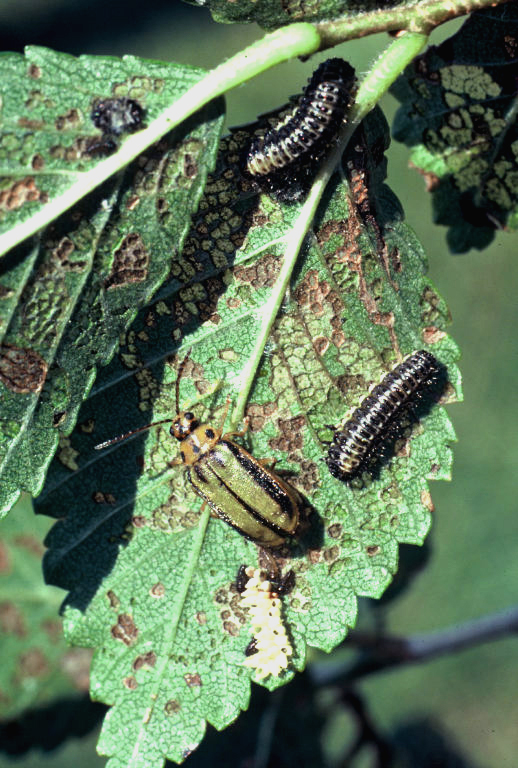
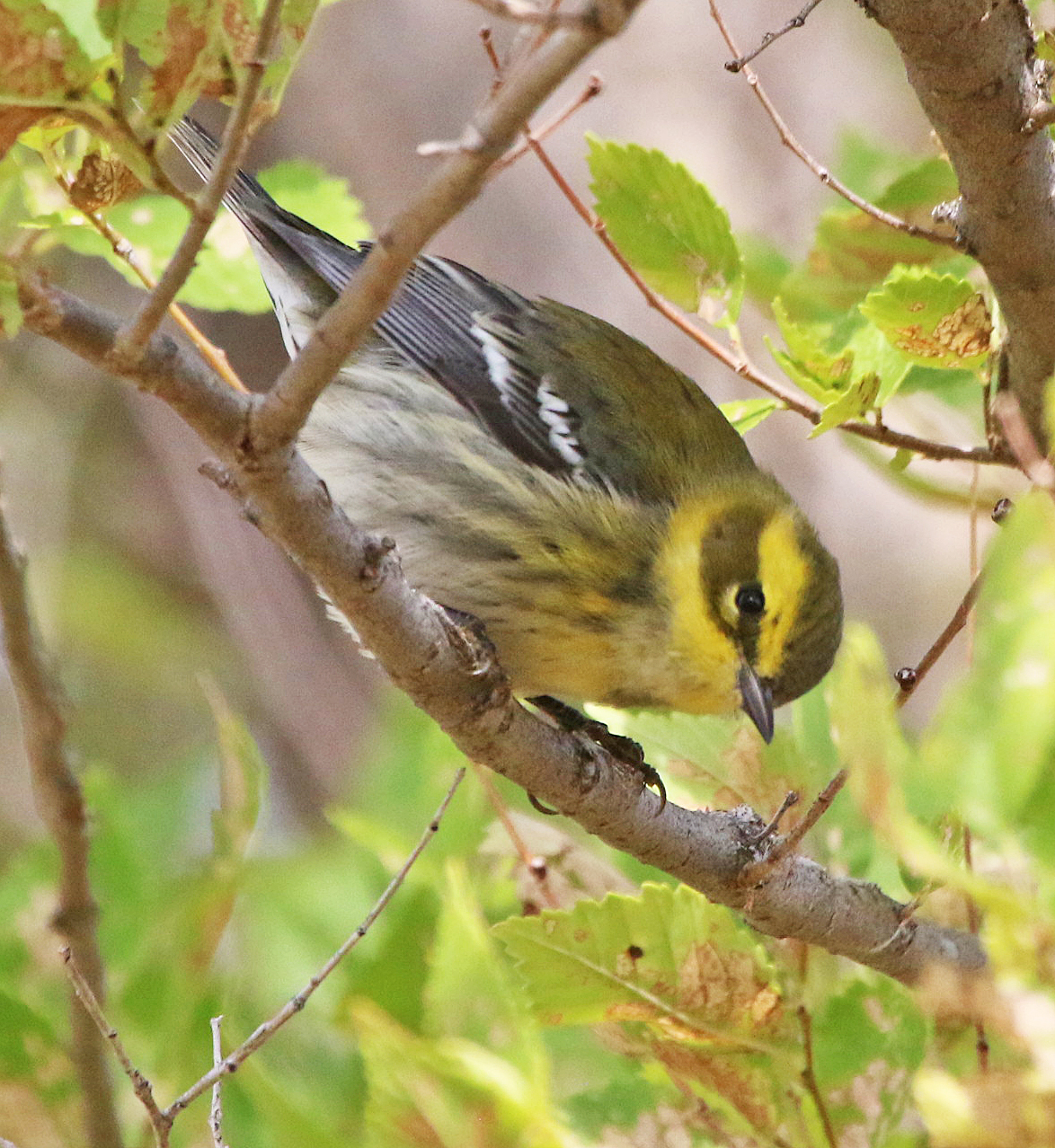
We all know about millers (aka Army Cutworm, Euxoa auxiliaris) and how they migrate to the mountains from the prairie in late spring, how they drive us and our cats crazy, how they hide in the mailbox, how they compress their bodies and slip thru cracks
the thickness of credit cards. Their return to the prairie in autumn is normally not all that noticeable. A return from high elevation to low has to happen for the cycle to be successful year after year but the return trip is apparently spread out over a
longer period of time. Concentrations of moths in autumn normally do not reach exasperating, dangerous-to-car-driving levels. Well, currently at Crow Valley, the few open bathrooms are full of them. On the 8th, one "dog-pile" at the peak of the ceiling
numbered at least 25 individuals. They looked like Hugh Kingery's famous photo of Brown Creepers huddled in a night roost. Insects are cold-blooded but they can perform mini-flutters and generate heat which could benefit the scrum. A lot of birds are eating
millers at present, as well as other species of moths that cope with storms by hiding in cavities, under bark flaps, in bathrooms, under eaves, under leaves. The Brown Thrashers scratched leaves for such things, and also worms and other creatures brought
to the surface by saturated soil. An American Redstart found a moth under the bench where birders park by the Crow Valley Picnic Pavilion. Note the flying wing scales in the pic below during the pre-consumption shakedown.
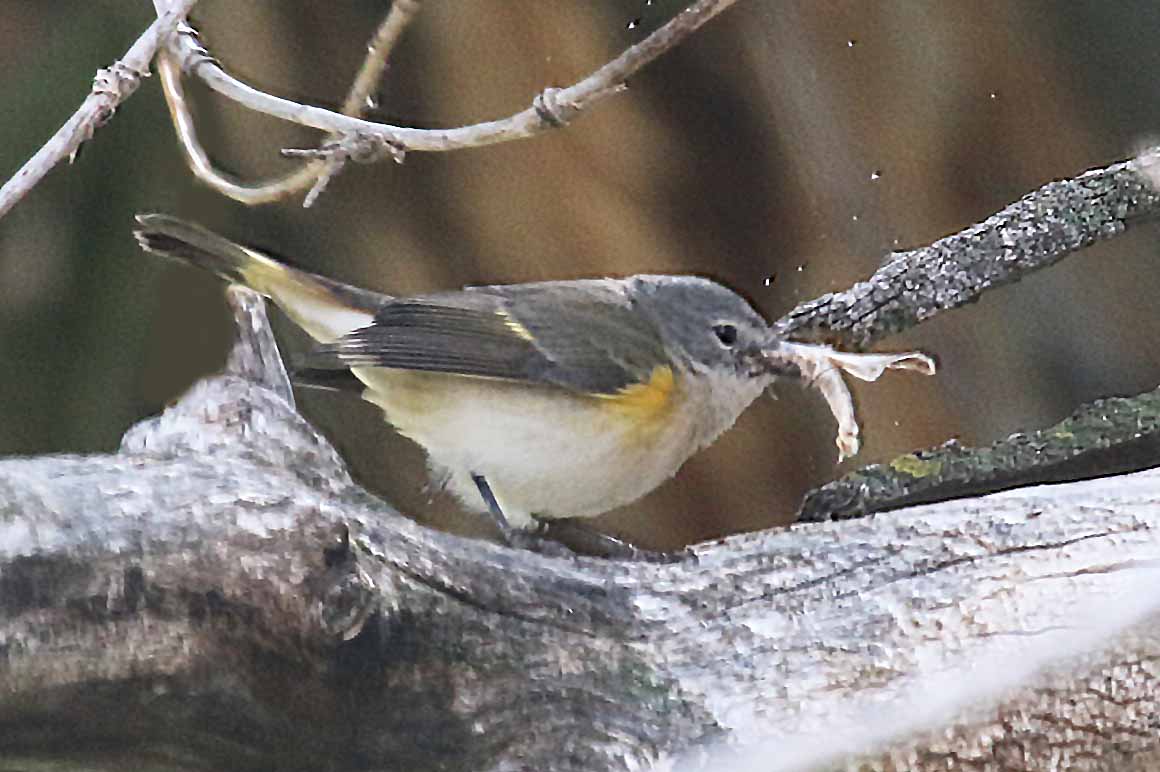
Pewees and empids foraged noticeably lower the last couple days. One pewee in the cemetery kept coming back to the same patch of road, even after I initially, accidentally flushed it while driving. Not sure what it was after but it might have been aphids
washed from needles of a spruce, or ants.

Wilson's Warblers hover-gleaned from grass, picked midges off barbed wire, scurried across the ground in pursuit of tiny morsels like leafhoppers. I saw a Western Tanager fly to the ground, I think hunting for ants. A young Red-headed Woodpecker came down
off the backstop of the Crow Valley ballfield to get a big grasshopper in the first base coach's box. It cached it in a crack near the top of the pole.
Recently fledged Barn Swallows, and a few adults, at the north end of Sheldon Lake in Fort Collins' City Park sat on the concrete "shore" or climbed on the side of a vertical concrete wall to pick off midges, oblivious to the constant parade of dogs and people.
It looked to me like the young ones all had the same thought: "This fledging isn't what it's cracked up to be. At least last week we had 25 square meals a day, a roof over our head, and the warmth of siblings." Or, much more likely, they were just focused
on survival.
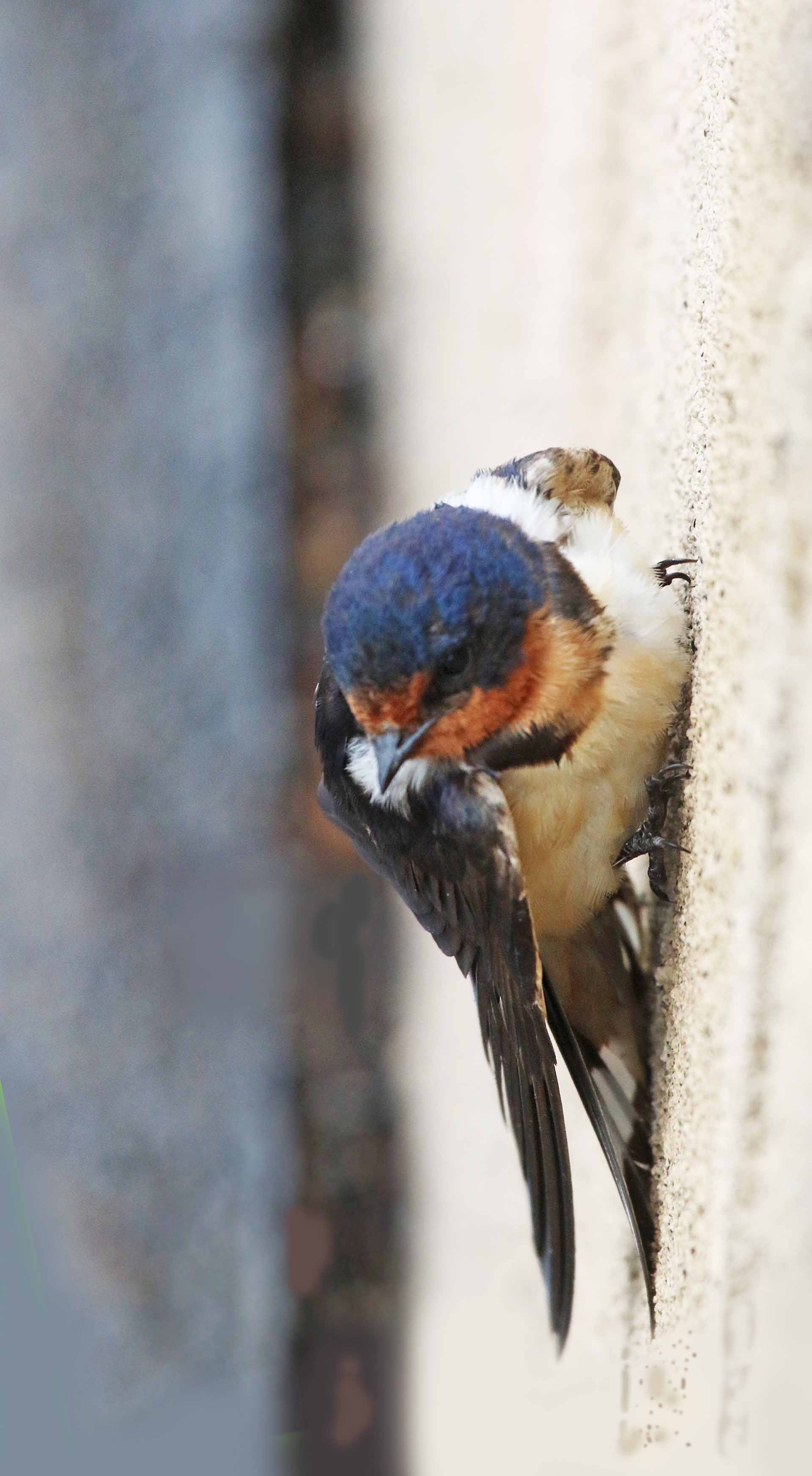
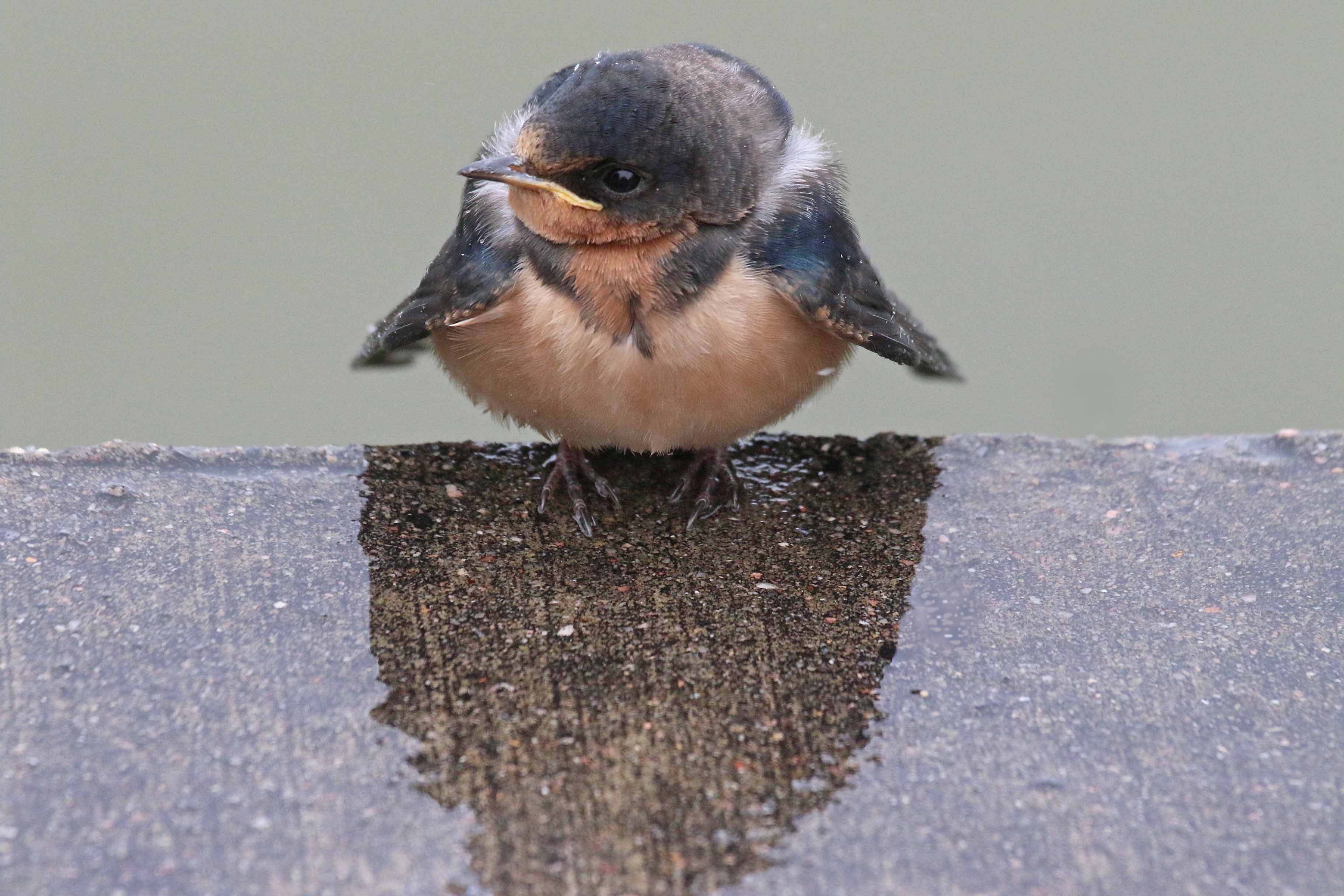
Stress and mortality are constants in bird populations. Certainly harsh weather elevates the levels of these things, but more than that I think we just can't see them as vividly as when revealed by a storm.
Every bird that leaves a nest to the point of reproducing itself is a borderline miracle. The routine feats of birds are incredible. Their creative abilities to overcome adversity even more remarkable. And I think us bird watchers are lucky to have the hobby
we do, and, likewise, obligated to do what we can to conserve birds in our own individual ways.
Dave Leatherman
Fort Collins
Caleb A
Sep 11, 2020, 5:30:41 PM9/11/20
to Colorado Birds
Wow! Thanks Dave for sharing. You're an incredibly thorough and well-rounded birder, and I always enjoy reading about your discoveries and excursions!
The birds are happy, and so am I
~Caleb Alons, Larimer County
Reply all
Reply to author
Forward
0 new messages
